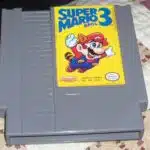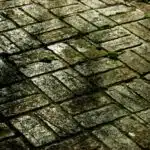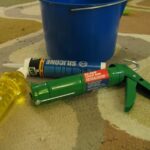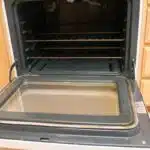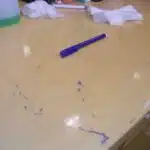Metal surfaces, whether in the kitchen or garage, are prone to accumulating grease and oil stains. These stains can be unsightly and even dangerous if left unattended, as they can cause slips and falls. As a professional cleaner or cleaning technician, it is essential to know how to remove grease from metal for guaranteed results.
There are numerous methods for removing grease from metal surfaces, but not all of them are effective. Some methods may even damage the metal surface or leave behind residue that attracts more dirt and grime. In this article, we will explore some tried-and-true techniques that will guarantee the removal of grease from metal surfaces without harming the material. By following these steps, you can ensure a clean and safe environment for yourself and those around you.
Understanding The Properties Of Grease And Metal
Grease is a complex mixture of different types of fatty acids, oils, and other substances that have a high affinity for surfaces. Understanding grease chemistry is essential to remove it effectively from metal surfaces. Grease molecules consist of long chains of carbon and hydrogen atoms with a polar head, which makes them hydrophobic or water-resistant. This characteristic allows grease to stick to metal surfaces tightly.
Metal surfaces are usually non-porous and have high surface tension, which makes them resistant to adhesion. However, the presence of grease on metal surfaces changes their surface properties. Grease molecules lower the surface tension by breaking down the intermolecular forces between metal atoms and reducing their ability to repel foreign substances. As a result, grease can penetrate deep into the pores and crevices of metal surfaces where it can be challenging to remove.
Understanding the properties of both grease and metal is vital to developing effective cleaning strategies that can remove grease from metal surfaces without damaging them. Choosing the right cleaning products that can break down grease molecules without affecting the surface tension of metals is crucial. In the next section, we will discuss how you can choose the right cleaning products for guaranteed results.
Choosing The Right Cleaning Products
Understanding the properties of grease and metal is crucial in knowing how to remove grease from metal effectively. However, it is equally important to know which cleaning products to choose for the task at hand. The wrong cleaning product can damage the metal surface, making it difficult to restore its original shine. Choosing the right cleaning products not only ensures that grease is removed but also keeps the surface of the metal intact.
When choosing a cleaning product, consider the type of metal surface you are dealing with and the type of grease present on it. Some metals are prone to rusting, while others may be sensitive to acidic solutions. For instance, aluminum surfaces should not come into contact with strong alkaline cleaners as they can corrode quickly. Always read labels carefully and follow instructions on safe handling of cleaning products.
Safe handling of cleaning products is critical when removing grease from metal surfaces. Wear protective gear such as gloves and safety goggles when using chemicals such as solvents or acids. Avoid mixing different types of cleaners as this can lead to dangerous chemical reactions that can cause harm or damage to surfaces. Store all chemicals safely in a designated area away from children and pets.
In summary, choosing the right cleaning products and handling them safely are vital steps in removing grease from metal surfaces effectively. By following instructions carefully, you can ensure that your chosen cleaner does not cause any damage while restoring your metal surface’s shine. In our next section, we will discuss preparing the metal surface for cleaning by examining some essential tools and techniques used by professional cleaners.
Preparing The Metal Surface For Cleaning
According to a recent survey, improper surface preparation is one of the most common reasons for ineffective cleaning. Therefore, it is crucial to understand the importance of surface preparation before cleaning metal surfaces. Preparing the metal surface ensures that no dirt or grime remains on it, allowing for a smoother and more efficient cleaning process.
One of the most common mistakes during surface preparation is not removing loose particles or debris from the metal surface. Using a vacuum cleaner or dry cloth to remove debris helps to ensure that no particles remain on the surface after cleaning. Another mistake is not using the right cleaning agent for the job. It is important to select a suitable cleaner based on the type and degree of grease buildup on your metal surface.
To prepare your metal surface effectively, begin by identifying any areas with heavy grease buildup and apply an appropriate degreaser evenly across all surfaces. Once you have applied degreaser, let it sit for several minutes before scrubbing away any remaining dirt or grime using a non-abrasive pad or cloth. Afterward, rinse the metal thoroughly with clean water and let it dry.
By properly preparing your metal surfaces before cleaning, you can ensure that they are ready for effective grease removal using simple household items such as baking soda and vinegar, which we will discuss in the subsequent section. Remember to always follow safety guidelines when handling chemical cleaners and wear protective gloves to avoid skin irritation or harmful exposure.
Using Simple Household Items For Grease Removal
To effectively remove grease from metal surfaces, it is crucial to use the appropriate cleaning agents. One of the most effective ways of removing grease from metal surfaces is by using vinegar and baking soda. Vinegar is a natural degreaser that breaks down oils, while baking soda acts as a mild abrasive that helps scrub away the grease.
To begin this process, mix equal parts of vinegar and water and apply it to the greasy surface. Let the solution sit for a few minutes before sprinkling some baking soda on top. Use a soft-bristled brush or sponge to scrub away the grease, working in circular motions until all the stains are gone. Rinse with warm water and dry with a clean cloth.
Another effective method for removing grease from metal surfaces is by using lemon juice and salt. Lemon juice contains citric acid which breaks down oil molecules while salt acts as an abrasive that scrubs away dirt and grime. To use this method, cut a lemon in half and sprinkle some salt on its surface. Rub the lemon over the greasy area, pressing down firmly as you go along. Allow it to sit for several minutes before rinsing with warm water.
Next up, we will discuss how applying heat can help loosen stubborn grease stains that cannot be removed through regular cleaning methods. By carefully applying heat to these areas, you can break down the bonds between the grease molecules and make them easier to wipe away.
Applying Heat To Loosen Stubborn Grease Stains
When dealing with stubborn grease stains on metal surfaces, applying heat can be an effective method of loosening and removing the buildup. This technique works by breaking down the molecular bonds of the grease, making it easier to wipe or scrub away. There are two main ways to apply heat for this purpose: using solvents or effectively using steam.
Using solvents for grease removal involves applying a heat source directly to a solvent solution that has been applied to the affected area. The heat encourages the solvent to penetrate deeper into the grease, breaking it down more effectively. It is important to use caution when working with solvents, as they can be harmful if inhaled or come into contact with skin. Always wear protective gear such as gloves and a face mask when working with these products.
Effectively using steam for grease removal requires a specialized tool called a steam cleaner. These machines produce high-pressure steam that can quickly melt away even the toughest grease stains. To use this method, simply direct the steam onto the affected area and wipe away any residue with a clean cloth. Steam cleaning is not only effective but also eco-friendly since it uses only water as its cleaning agent.
Moving forward, if you find that neither of these methods is effective at removing your stubborn grease stain, don’t worry! There are still other options available such as using commercial degreasers for tough stains. However, before moving on to stronger solutions, always exhaust all possible methods first to avoid damaging your metal surface or harming yourself in the process.
Using Commercial Degreasers For Tough Stains
Applying heat to loosen stubborn grease stains can be an effective way to remove grease from metal surfaces. However, if you are looking for guaranteed results, using commercial degreasers or eco-friendly alternatives may be a better solution. Commercial degreasers are specifically designed to break down and dissolve tough grease stains on metal surfaces, making them a popular choice among cleaning technicians.
If you prefer eco-friendly alternatives, there are options available that use natural ingredients to break down and remove grease from metal surfaces. For example, vinegar and baking soda can be combined to make a powerful DIY alternative degreaser. Simply mix equal parts vinegar and baking soda together until it forms a paste-like consistency. Apply the mixture onto the greasy surface and let it sit for at least 10 minutes before wiping it away with a damp cloth.
When choosing between commercial degreasers or eco-friendly alternatives, it is important to consider the type of metal surface you are working with as well as any environmental concerns you may have. Both options can be effective in removing grease from metal surfaces when used correctly. However, proper scrubbing techniques are also crucial in order to achieve optimal results. In the next section, we will discuss some effective scrubbing techniques that can help ensure your metal surfaces are clean and free of grease stains.
Scrubbing Techniques For Effective Cleaning
A dirty metal surface covered in grease can be an eyesore, and sometimes cleaning it can seem like a daunting task. However, with the right scrubbing techniques and grease removal products, you can guarantee effective results. Scrubbing is a vital part of the cleaning process, and it ensures that every inch of the surface is free from any stubborn stains or dirt.
To start with, use a stiff-bristled brush to remove any loose debris on the metal surface. Then apply your preferred grease removal product on the affected area and let it sit for a few minutes. Afterward, you can use a scouring pad or steel wool to scrub away at the surface gently. These scrubbing techniques ensure that you get rid of all the grime and grease from the metal without damaging its texture.
When using these scrubbing techniques, always remember to work in small sections and apply moderate pressure while scrubbing. This helps to avoid any damage to the surface or leaving behind any residue. Additionally, using hot water during the process improves its effectiveness by melting away stubborn grease faster. With these tips in mind, you are guaranteed outstanding results after your cleaning session.
Now that you have effectively removed all the grease from your metal surface using these fantastic scrubbing techniques, it’s time to rinse and dry it properly before using it again. Rinsing helps to remove any remaining residue left behind by the cleaning products while drying ensures that no moisture remains on the surface which could lead to rusting or other forms of corrosion.
Rinsing And Drying The Surface
Effective cleaning requires a thorough understanding of the various techniques used to remove dirt, grime, and other contaminants. Scrubbing is an essential part of the cleaning process as it helps to loosen and remove stubborn stains from metal surfaces. Once you have successfully scrubbed away the grime, the next step is rinsing and drying the surface.
Timing is crucial when it comes to rinsing and drying. It is important to rinse off any leftover residue as soon as possible after scrubbing. Leaving residue on metal surfaces for too long can cause further damage and corrosion. After rinsing, allow the surface to dry completely before moving onto the next step of your cleaning process.
Using protective gear is also important when rinsing and drying metal surfaces. Gloves, goggles, and aprons are just a few examples of protective gear that should be worn during these steps. This will not only protect you from harmful chemicals but will also prevent any damage to surrounding areas.
Avoiding damage to the metal surface should always be a top priority during the cleaning process. When rinsing and drying metal surfaces, gently wipe away excess water using a soft cloth or sponge. Avoid using abrasive materials such as steel wool or scouring pads as they can scratch and damage delicate surfaces.
Transition: Now that we have established how important it is to avoid damaging metal surfaces during cleaning, let’s move onto discussing some tips for removing grease from metal for guaranteed results.
Avoiding Damage To The Metal Surface
When attempting to remove grease from metal surfaces, it is important to test the cleaning product on a small area first to ensure it will not cause any damage. It is also important to choose the most effective cleaning solution for the grease build-up, as different solutions may be more suitable for different types of grease. When cleaning the metal surface, it is best to avoid using abrasive materials, as this can cause further damage to the metal surface. Finally, it is important to follow the instructions provided with the cleaning product and to use the correct safety equipment.
Testing Products
When it comes to removing grease from metal, testing product effectiveness is crucial in avoiding damage to the surface. Whether using a DIY solution or a commercial cleaner, it’s important to compare the results and choose the most effective option. This not only saves time and money, but also ensures that the metal surface remains intact.
DIY solutions often involve using household items such as vinegar or baking soda. While these may work for minor grease stains, they may not be effective for tougher stains or on certain types of metal surfaces. It’s important to test the solution on a small area before applying it to the entire surface. This helps avoid any potential damage that may occur from using an ineffective solution.
Commercial cleaners are specifically formulated for removing grease from metal surfaces and are typically more effective than DIY solutions. However, it’s still important to test the product on a small area first and follow the manufacturer’s instructions carefully. Choosing a high-quality commercial cleaner can mean guaranteed results without damaging the metal surface.
Cleaning Solutions
Degreasing techniques are essential for maintaining the cleanliness and appearance of metal surfaces. However, it’s equally important to consider the potential damage that may occur when using certain cleaning solutions. As a professional cleaner or cleaning technician, it’s our responsibility to provide effective cleaning options while also ensuring that we don’t harm the environment or the metal surface.
One way to avoid damaging the metal surface is by using eco-friendly degreasing solutions. These solutions are formulated with natural ingredients and are free from hazardous chemicals. They not only protect the metal surface but also reduce environmental pollution. However, it’s important to note that not all eco-friendly options may be effective for removing tough grease stains. Proper testing should be conducted before application.
In addition to eco-friendly options, there are several commercial cleaners available that are specifically designed for removing grease from metal surfaces without causing any damage. These cleaners come in various forms such as sprays, foams, and gels and may contain different active ingredients depending on their intended use. It’s crucial to read the label carefully and follow instructions to ensure optimal results without harming the metal surface. By choosing appropriate degreasing techniques and solutions, we can maintain a clean and safe environment while keeping the metal surface intact.
Dealing With Rust And Corrosion
To ensure the longevity of metal objects, it is important to address rust and corrosion buildup. Rust occurs when iron or steel reacts with oxygen and water, while corrosion occurs when metals react with other elements in their environment. These reactions can lead to the degradation and eventual destruction of the metal object, making it imperative to take preventive measures.
One effective way of preventing rust and corrosion is by using rust prevention products such as corrosion inhibitors. These products work by creating a protective barrier on the surface of the metal, which blocks out moisture and other harmful elements that can cause rust and corrosion. Additionally, regular cleaning of metal objects can help prevent buildup of dirt and grime that can accelerate rust formation.
If your metal object has already begun to show signs of rust or corrosion, there are steps you can take to address it. First, remove any loose flakes or particles using a wire brush or sandpaper. Then, apply a rust converter solution to transform any remaining rust into a stable compound that will not continue to corrode the metal. Finally, protect the surface with a layer of paint or sealant to prevent further damage.
- Regularly clean metal objects with mild soap and water
- Apply wax or oil-based coatings for added protection
- Store metal objects in dry areas free from humidity
- Use desiccants such as silica gel packets to absorb any moisture in storage containers
- Check for signs of rust or corrosion regularly and address promptly
To prevent grease buildup in the future, it is important to regularly clean surfaces where grease commonly accumulates. Use degreaser solutions specifically designed for removing grease from metal surfaces. Additionally, consider implementing preventative measures such as installing grease traps in areas where grease accumulation is common. With proper care and maintenance, you can extend the lifespan of your metal objects and prevent future damage from occurring.
Preventing Grease Buildup In The Future
After effectively dealing with rust and corrosion, the next concern is removing grease from metal surfaces. Grease buildup can be a tough cleaning challenge, but with proper techniques, it can be removed for guaranteed results. There are several methods to remove grease from metal that you can implement, depending on the severity of the buildup.
One effective way of removing grease is by using a degreaser. A degreaser is a cleaning agent that breaks down and dissolves grease, making it easier to wipe away. However, not all degreasers are suitable for use on all types of metals. It’s important to identify the type of metal before using a degreaser to prevent damage or discoloration. Additionally, make sure to wear protective gear when using harsh chemicals like a degreaser.
Another solution for preventing grease buildup on metal surfaces is the application of grease-resistant coatings. These coatings provide an additional layer of protection against oil and grease infiltration while also maintaining the appearance and integrity of your metal surface. Grease-resistant coatings work by repelling or resisting oil droplets from penetrating the surface, making them easy to clean off afterward.
In addition to using cleaning agents and protective coatings, it’s also wise to install grease trapping devices in areas where cooking and food preparation occur frequently. Grease traps collect solid waste materials like food particles and oils before they enter the wastewater system, preventing blockages in pipes or other plumbing emergencies. By implementing these methods, cleaning professionals can effectively remove grease from metal surfaces while protecting them against future buildup in commercial kitchens or other facilities that require regular maintenance.
Transition: Now that we have discussed various ways to remove grease buildup on metal surfaces let us move on to how we can clean metal cookware and utensils effectively.
Cleaning Metal Cookware And Utensils
Caring for metal cookware is essential to extend its longevity. Metal cookware and utensils are prone to grease buildup, which can be difficult to remove without proper cleaning techniques. Here are some tips for cleaning metal utensils and cookware.
Firstly, always rinse your metal cookware with hot water after use. This will help remove any excess food particles and prevent them from sticking onto the surface of the cookware. Use a mild dishwashing soap to clean the metal utensils. Avoid using abrasive scrubbers or steel wool as they can scratch the surface of the metal, leading to rusting.
Secondly, for tough stains or grease buildup on your metal cookware, mix equal parts of baking soda and water to create a paste-like consistency. Apply this mixture onto the affected area and let it sit for 10-15 minutes before scrubbing with a non-abrasive sponge or cloth. Rinse thoroughly with hot water and dry with a clean towel.
Taking care of your metal cookware and utensils not only ensures their longevity but also helps maintain their quality over time. In conclusion, following these tips for cleaning metal utensils will leave them looking brand new and free from any unsightly grease buildup.
Transition: Now that we’ve discussed how to care for your metal cookware, let’s move on to cleaning other types of metal tools and equipment used in various industries.
Cleaning Metal Tools And Equipment
When it comes to cleaning metal tools and equipment, removing grease can be a challenge. Fortunately, there are several effective methods that can guarantee results. One option is to use a degreaser specifically designed for metal surfaces. Simply spray the degreaser onto the surface, let it sit for a few minutes, and then wipe it away with a clean cloth.
Another solution is to use vinegar or baking soda mixed with water. This natural remedy can work wonders in removing grease from metal surfaces. Apply the mixture onto the affected area and scrub gently with a soft-bristled brush. Rinse thoroughly with water and dry the surface completely to prevent metal rust formation.
To prevent metal rust formation after cleaning, it’s important to apply a protective coating such as wax or oil onto the surface. This will not only keep your metal tools and equipment looking shiny but also help prevent future corrosion. For those using metal tools for automotive use, be sure to choose products that are specifically formulated for automobiles to avoid damage or discoloration.
Cleaning and maintaining metal surfaces is crucial for their longevity and performance. In industrial settings where metals are constantly exposed to harsh conditions, regular cleaning becomes even more important. In the subsequent section, we will explore effective ways of cleaning metal surfaces in industrial environments without damaging them or compromising their effectiveness.
Cleaning Metal Surfaces In Industrial Settings
As the saying goes, “cleanliness is next to godliness.” This holds true for metal surface maintenance in industrial settings. Maintaining a clean environment is crucial not only for safety reasons but also for productivity and efficiency. Accumulated grease on metal surfaces can lead to equipment malfunction and downtime, which could be costly for any manufacturing company. Therefore, it is important to implement proper cleaning techniques to ensure that the equipment operates at its best.
Removing grease from metal surfaces can be challenging, especially when dealing with automotive parts that have been exposed to extreme conditions. However, there are several grease removal techniques that can guarantee results. One of the most effective methods is using a degreaser or solvent cleaner specifically designed for automotive parts. These cleaners dissolve grease and grime without damaging the metal surface.
Another technique is using steam cleaning equipment that can blast away even the toughest grease stains. Steam cleaning works by heating water to high temperatures and then pressurizing it to create powerful jets of steam that loosen dirt and grime from metal surfaces. This method not only removes grease but also disinfects the surface, making it safe for use in food processing facilities.
In summary, greasy metal surfaces should not be ignored as they could lead to catastrophic equipment failure if left unaddressed. Using proper cleaning techniques such as degreasing solvents or steam cleaning equipment can help maintain a clean environment while ensuring optimal equipment performance. In the next section, we will discuss troubleshooting common problems encountered during grease removal processes.
Troubleshooting Common Grease Removal Problems
After cleaning metal surfaces in industrial settings, removing grease from these surfaces can be a challenging task. Even experienced technicians can make common mistakes when attempting to remove stubborn grease stains from metal surfaces. One such mistake is the use of abrasive materials and harsh chemicals that can damage the surface of the metal.
To avoid such mistakes, it is crucial to use appropriate cleaning agents and methods for each type of metal surface. DIY alternatives like using vinegar or baking soda may seem like an affordable option, but they are not always effective in removing all types of grease stains. Additionally, these alternatives may leave behind unwanted residues that can attract more dirt and grime in the long run.
Another common mistake is not allowing enough time for the cleaning agent to penetrate the grease before wiping away the residue. Rushing through this process often results in incomplete removal of the stain, leading to further complications down the line. Therefore, it is essential to follow manufacturer instructions carefully and allow enough time for each step of the process.
In conclusion, removing grease from metal surfaces requires careful consideration of both cleaning agents and techniques. It is crucial to avoid common mistakes like using abrasive materials or harsh chemicals that can damage surfaces, as well as not allowing enough time for cleaning agents to work effectively. Although DIY alternatives may seem appealing, they do not always provide guaranteed results. By following proper techniques and using appropriate cleaning agents, one can achieve successful results when removing stubborn grease stains from metal surfaces.
Conclusion
The removal of grease from metal can be a challenging task, but with the right tools and techniques, it can be accomplished with ease. Understanding the properties of both grease and metal is crucial in selecting the appropriate cleaning products that will effectively remove grease without damaging your metal surfaces. Preparing your metal surface for cleaning is also necessary to ensure that the cleaning process is successful.
When using household items for grease removal, it’s important to know which ones are safe for use on metal surfaces. Applying heat to loosen stubborn grease stains can also be an effective method to make the cleaning process easier. Cleaning metal cookware, utensils, tools, and equipment requires different techniques and products depending on their use.
In industrial settings where large machinery and equipment are present, specialized cleaning products may be necessary to remove tough grease stains. Troubleshooting common problems such as recurring stains or damage caused by improper cleaning methods can help prevent future issues.
The removal of grease from metal is not an easy task but with patience and proper techniques; it can yield guaranteed results. It is vital to understand the properties of both grease and metal to select appropriate cleaning products while preparing the surface adequately. Simple household items along with heat application could eliminate stubborn stains from most surfaces. Specialized cleaning agents might be required in industrial setups while troubleshooting recurring stains or damage by wrong practices could eliminate any future issues.
Image Credits
- “Grease” by On Location in Los Angeles (featured)












